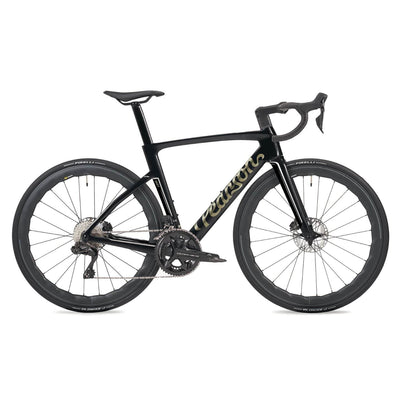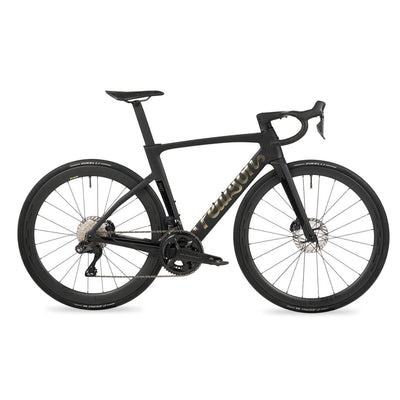How to wash cycling kit to last longer
Quality cycling clothing is expensive, so you’ll want to look after it. It will include technical fabrics with specialist fibre content like lycra or merino wool to provide the right properties for comfort and performance on the bike and be adapted for the conditions, be that hot and dry or cold and wet.

Standard washing cycles and detergents don’t cut it with these materials and can quickly degrade them, so they lose the technical properties that make them useful for cyclists. They will also shorten your clothing’s lifespan, so you’ll get less value out of it overall.
Our clothing designer, Annie, gives her tips on how to keep your cycling clothing in tip-top condition.
Why standard detergents are bad for your cycling clothing
Normal laundry products are quite aggressive and contain harsh chemicals. It’s easy to degrade the fibres in lightweight technical garments for summer use, so that they’ll lose their wicking function and won’t perform as well when you get hot.
In addition, wash products leave wetting agents, enzymes and other residues on the fibres. Polyester fabrics used for cycling clothing are hydrophobic, which means that they don’t absorb moisture from sweat, but move it away from your body. If they get contaminated, they’ll wet out so your jersey and shorts will hold sweat rather than staying dry and comfortable when you’re riding hard and they won’t cool you so effectively.
Often, detergents will have high pH values as well that can degrade technical fibres and stop them from working effectively.

The effects of washing winter clothing with the wrong detergents are just as detrimental. Again, the fabric will be engineered to move sweat away from your body and not to wet out and wetting agents in standard washing powders will make cold weather gear less effective.
Most winter kit like our Bryter Layter jacket is also DWR coated to deflect water from its outer surface, so that it will run off and moisture vapour from inside can pass through the fabric effectively, helping to reduce dampness. But the wetting agents in laundry detergents will cause the outer layer to wet out more easily, so wicking is less effective. They can also potentially block the tiny pores in the membrane that keeps a waterproof jacket breathable. Result: the fabric will get damp and clammy and you’ll get cold.
solution
So it’s important to use washing products specifically designed for technical gear and which doesn’t leave residues on the fabric. We’ve more detail on the construction of waterproof breathable clothing and how to look after your waterproof cycling jacket in a separate post.
We’d recommend using a product like Nikwax Tech Wash or Grangers Performance Wash to wash waterproof or softshell clothing and a reproofing product like Nikwax TX Direct or Grangers Clothing Repel if the DWR layer is not working effectively. Your jacket may not end up smelling like a spring garden, but it will continue to work effectively.
You should apply the same wash care toother technical kit, including summer clothing and winter jerseys to keep them in the best condition.

Some technical wash product brands even suggest running an empty wash cycle to ensure that any detergent residues are cleaned out of the machine before you attempt to wash your waterproof kit. That might be a bit extreme, but it’s a good insurance policy to preserve the waterproof properties of a waterproof jacket that you only wash occasionally.
Why fabric conditioner is bad for your cycling clothing
It’s not just standard detergents that Annie counsels against. Don’t try to use fabric conditioner on your kit either. Again, it leaves residues that will hamper your clothing’s wicking performance. Plus the chemicals in fabric conditioners can degrade the elastane fibres themselves, so your cycling shorts and other gear will progressively lose their stretch.
solution
So just put your cycling clothing through a standard rinse cycle without fabric conditioner. As with specialist washing products, you may not end up with the best smelling cycle clothing, but this should help keep it working effectively.
Why heat is bad for your cycling clothing
It’s not just standard detergents that can do for your cycling kit, washing it on too hot a cycle will shorten its lifespan. Annie points out that heat can cause elastane to melt, while merino wool fibres shrink if they get too hot, as does leather. A lot of cycling kit comes with logos, which can start to peel off or crack when they get hot.
And never tumble dry cycling kit for the same reasons. The only exception is some membrane-based waterproof clothing when a short tumble dry may help to reactivate the DWR coating.
solution
Take note of the washing instructions in your cycle clothing. Most cycling kit recommends washing at 30C and technical wash products are formulated to clean your clothing effectively at low temperatures. Once you’ve washed it, hang your cycling clothing out to air dry. Its technical properties and low moisture uptake will mean that it should dry quickly.

Why too vigorous a wash cycle is bad for your cycle clothing
Washing by machine puts a lot of mechanical strain on your cycle clothing, that again can damage it. The paddles on the inside of a washing machine drum are designed to agitate the water and clothing, displacing dirt from your clothes into the wash water, but they can also apply shear forces that can damage delicate fibres like elastane and wool.
solution
Ideally, we’d recommend hand washing your cycle clothing, as it’s a lot more gentle than machine washing. Not everyone has time for hand washing though, so if you do use a machine, set it to a short, delicate cycle and a low spin speed. Put your kit in a wash bag too, as this will reduce the mechanical forces acting on it and also stop zips and velcro from abrading the fabric.
The bottom line
To sum up, always make sure to use a technical wash product rather than normal detergent, don’t use fabric conditioner and wash on a delicate cycle at 30C or hand wash. Air dry your clothing after washing.
Look after your performance cycle clothing and it will serve you well, lasting longer, and you’ll preserve its technical properties so it works at its best for you as you ride.
Read next: How to look after a waterproof cycling jacket.
1 comment
Well done one of the most comprehensive aftercare article I’ve ever read. Perhaps one oversight wool rich garment don’t need to be washed every time you workout, simply air dry and dust off any road grime. Wool has natural anti bacterial properties, so simply air thoroughly.










